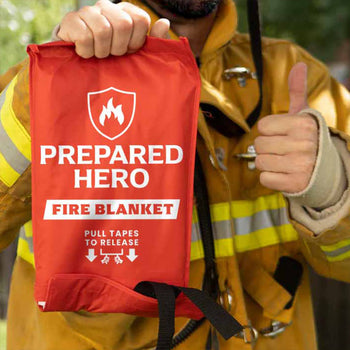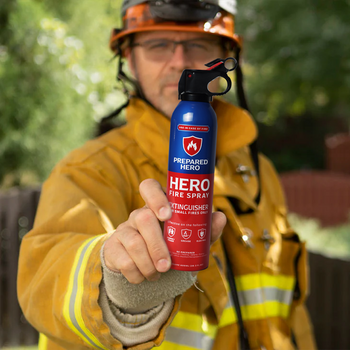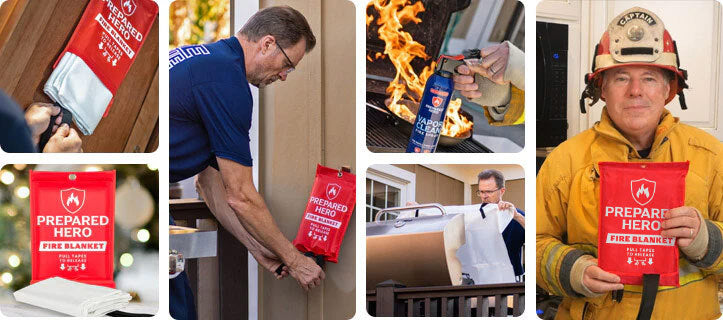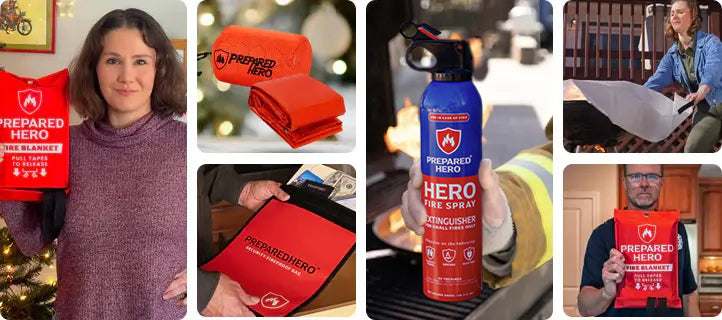Where you put your smoke detectors matters just as much as installing them. Proper placement makes sure they can detect...
A fire in an office or store can be devastating to people. Aside from death and property loss, people might lose their jobs, and the community might lose services.
The US Fire Administration estimates that 16,500 office and store fires occurred in a year, which led to $932 million in property damage. While workplace fires are unpredictable, businesses can take steps to prevent them from killing people and damaging property.
This is where a fire prevention plan comes in. But how exactly does a fire prevention plan benefit your workplace? How do you make one? In this guide, we’ll go through the basics of fire prevention plans and their benefits.
What Is a Fire Prevention Plan?

A fire prevention plan is a document outlining steps to prevent fires and protect people. Businesses, homes, and communities use them to identify fire hazards, implement safety measures, and create emergency procedures. The main goal of a fire prevention plan is to minimize risks and hazards associated with fires. It also ensures everyone knows how to respond when a fire occurs. There are five main types of fire prevention plans based on different settings:
1. Residential Fire Prevention Plans
Residential fire prevention plans keep homes safe from fires. They identify common household fire hazards like vegetable oil, overloaded outlets, and faulty wiring. Fire safety measures include installing smoke alarms and having a fire extinguisher, fire spray, or fire blanket ready. They also involve practicing fire drills, planning escape routes, and knowing when to evacuate if a fire starts.
2. Commercial Fire Prevention Plans
Commercial fire prevention plans are designed for offices, stores, and other businesses. They’re made to protect employees and customers. These plans focus on identifying fire risks in the workplace, installing fire sprinklers and smoke detectors, clearly marking exit routes, and training employees on fire safety and evacuation procedures. Certain businesses also require extra precautions. For example, restaurants need kitchen fire suppression systems to prevent grease or Class K fires.
3. Industrial Fire Prevention Plans
Industrial fire prevention plans are designed for factories, warehouses, and other industrial settings where fire risks are higher because of heavy machinery and flammable materials. These plans involve identifying and controlling fire hazards, properly storing hazardous materials, ensuring electrical safety, and training workers on fire response and evacuation. Strict regulations and protocols must be in place because industrial fires can be severe.
4. Institutional Fire Prevention Plans
Institutional fire prevention plans involve hospitals, universities, and government buildings. These places need detailed fire prevention strategies because of their size and occupancy rate. Institutional fire prevention plans include assessing the building layout and fire risks, assigning fire safety roles to staff, conducting regular fire drills and training sessions, clearly marking exits, and making sure fire prevention tools are working. Since these facilities often house vulnerable individuals, fire safety measures must be thorough and regularly updated.
5. Community Fire Prevention Plans
Community fire prevention plans involve entire neighborhoods working with fire departments and local organizations to prevent large-scale fires, such as wildfires and urban fires. Strategies include educating residents about fire safety, having fire prevention workshops, making emergency response plans for disasters, and making sure fire hydrants and emergency services are accessible. By working together, communities can reduce fire risks and improve response times.
How Important Is Fire Prevention?

Having a fire prevention plan isn’t just about protecting property; it’s about saving lives. Whether at home or in the workplace, a solid plan helps keep people safe. A small flame can turn into a major fire in 30 seconds, and the damage can be devastating without preparation.
An effective fire prevention plan identifies potential hazards before they become dangerous. Hazards like overloaded outlets, flammable liquids, and combustible solids need to be addressed to prevent fires from starting. In addition, proper training is just as important in businesses. Employees should know how to recognize fire risks and what to do if a fire breaks out. Simple steps like keeping emergency exits clear and maintaining fire extinguishers make a huge difference.
A fire prevention plan is also a legal requirement in some places. Businesses that ignore fire safety protocols risk fines, property loss, and lawsuits. More importantly, failing to prepare puts employees and customers at serious risk. Fires don’t just destroy buildings; they can lead to job losses if businesses can’t recover.
Community-wide fire prevention is also key. Educating residents about fire hazards, holding drills, and making sure emergency services are prepared can prevent huge disasters. Whether you’re at home, work, or in a community, fire safety prevention is always worth the effort. At the end of the day, fire prevention is about being proactive. It’s a small investment of time and effort compared to the potential loss of lives and property.
Components of an Effective Fire Prevention Plan

A fire prevention plan helps keep workplaces safe by identifying fire risks and outlining how to manage them. It should include the following elements at a minimum, according to the Occupational Safety and Health Administration (OSHA:
Fire Hazards
The first step is listing all major fire hazards. They’re anything that can catch fire or spread flames. Common examples include paper, boxes, machines, heaters, flammable liquids, and cooking appliances. Knowing the hazards in your workplace is the first line of defense against fires.
Fire Protection Equipment
Once you know the hazards, you need the right fire protection tools to handle them. These include fire alarms, smoke detectors, fire extinguishers, fire sprinklers, fire sprays, and fire blankets. Plus, each fire hazard should have a matching piece of equipment to control it if needed.
Proper Handling and Storage
Hazardous materials, such as acetaldehyde, bromine, and ammonia, need to be stored and handled properly. Poor storage can turn a small fire into a disaster. A fire prevention plan should include storage rules, such as keeping flammable materials in well-ventilated areas and using proper containers.
Potential Ignition Sources
Fire doesn’t start on its own. It needs an ignition source. Open flames, hot surfaces, and faulty wiring are common culprits. A fire prevention plan should include measures to control these risks. These measures include regular equipment maintenance, hot work permits, and proper ventilation.
Handling Flammable and Combustible Waste
Flammable and combustible materials can ignite easily, so they must be carefully disposed of. Your workplace fire prevention plan should include designated disposal areas, fire-resistant waste containers, and regular cleanup schedules. Places such as warehouses and factories should strictly follow these rules.
Maintenance of Heat-Producing Equipment
Any equipment that generates heat, like ovens, stoves, or industrial machinery, should have safeguards to prevent accidental ignition. This includes features like automatic shut-offs and heat shields. Regular maintenance is also a must to make sure these safeguards work properly.
Employees Responsible for Equipment Maintenance
Fire prevention requires ongoing maintenance, and someone needs to be in charge. A fire prevention plan should list the employees responsible for maintaining equipment and ignition safeguards. Doing this ensures accountability and proper upkeep.
Employees Responsible for Fuel Source Control
Fuel sources, such as gas lines, propane tanks, or stored chemicals, can make a fire worse if not controlled properly. A workplace fire prevention plan should assign specific employees to monitor and manage these hazards. Doing this reduces the risk of uncontrolled fires.
Employee Training and Awareness
Every employee should know about the fire risks in their workplace and how to stay safe. When someone starts a new job, they should be informed about potential fire hazards and trained on fire prevention. Regular reviews and fire drills help reinforce this knowledge.
A solid fire prevention plan isn’t just about having rules—it’s about making sure everyone understands and follows them. Keeping these elements in check helps protect people, property, and businesses from fire’s damaging effects.
How to Make a Fire Prevention Plan

Fires can start in an instant and spread fast. Having a solid fire prevention plan isn’t just a good idea; it’s a must. Here’s a simple step-by-step guide to creating a plan that keeps everyone safe:
1. Identify Fire Hazards
Figure out what could cause a fire first. Walk around your workplace and take note of anything flammable. These include paper stacks, chemicals, or overloaded power strips. Pay attention to heat sources as well, including stoves, heaters, and electrical wiring. Once you have a list, rank these hazards based on how likely they will cause a fire and how severe the damage would be.
2. Keep Your Workplace Clean
A messy workplace can make fires worse. Regular cleaning is key. Dispose of flammable waste properly, store oily rags in airtight metal containers, and keep hallways and exits clear. If you work in an industrial setting, be extra cautious about areas where grease, dust, or other combustible materials build up.
3. Have the Right Tools
You don’t just want to prevent fires. You also need to be ready if one happens. Make sure you have fire extinguishers, fire sprays, and fire blankets in key areas. Different fires require different extinguishers, so make sure you have the right ones (Class A fire extinguishers for Class A fires, Class C fire extinguishers for Class C fires, etc.). Consider getting extra large fire blankets if you want a more flexible option.
4. Set Up Fire Alarms and Detectors
Fires can go unnoticed until it’s too late. Fire alarms and smoke detectors alert everyone early. Place them throughout the building, especially near kitchens, electrical rooms, and storage areas.
5. Install Fire Suppression Systems
Is your workplace huge or prone to fires? Consider getting fixed fire suppression systems, like sprinklers or foam-based extinguishing systems. They activate automatically and can help stop a fire before it spreads. Keep them well-maintained and test them annually.
6. Assign Responsibilities
Everyone should know what to do in case of a fire. Assign clear roles. Who makes sure fire extinguishers are working, who leads evacuations, and who calls 911? Run regular training sessions so employees know how to use fire extinguishers, identify hazards, and evacuate safely.
7. Create an Emergency Evacuation Plan
A fire escape plan should include clear exit routes and a designated meeting spot outside. Make maps showing exits, make sure doors aren’t blocked, and hold regular fire drills. If you have team members with mobility issues, assign someone to assist them. Then, train these people to follow the RACE protocol.
8. Share Your Plan
Put your fire prevention plan in writing once it’s ready. Share it with employees, post copies in key areas, and review it periodically. Update the plan and inform everyone if anything changes (like moving equipment or adding new hazards).
9. Conduct Fire Drills
The best way to know if your plan works is to test it. Hold fire drills at least once a year so everyone knows what to do. Remember, practice makes perfect when it comes to fire safety.
10. Be Prepared for Recovery
Fires can still happen even with the best prevention plan. So, make a backup recovery plan. Know how to contact emergency services, store important documents safely, and create a business continuity plan if your workplace gets affected.
How Does a Fire Prevention Plan Benefit Your Workplace?

A fire prevention plan is more than just a safety requirement. It helps keep your workplace, employees, and business operations protected. Here’s how an effective fire prevention plan benefits your workplace:
1. Reduces the Risk of Fire
A fire prevention plan identifies potential hazards and provides steps to minimize them. This lowers the chances of fires breaking out. It also keeps employees, customers, and business assets safe. Regular inspections of electrical systems, proper storage of flammable materials, and regular cleaning help prevent fires before they start.
2. Makes Workplaces Safer
Fire safety isn’t just about reacting to fires. It’s about preventing them. A fire prevention plan makes sure employees are aware of fire risks and know how to prevent them. When employees understand fire hazards and follow safety protocols, the workplace becomes safer for everyone.
3. Protects Properties and Other Assets
Fires can cause massive damage to business property, equipment, inventory, and important documents. A solid fire prevention plan includes using fire-resistant storage cabinets, installing fire suppression systems, and having fire prevention tools. These steps help protect valuable assets and minimize losses caused by fire.
4. Minimizes Business Downtime
A fire can shut down operations for weeks or even months. This can cause financial losses and reputational damage. Having a fire prevention plan helps businesses recover quickly. For example, keeping digital backups of important data or storing important documents in fireproof bags or safes can help reduce downtime.
5. Makes Employees More Prepared
Fire safety training is a crucial part of a fire prevention plan. Employees need to know how to use fire extinguishers, recognize fire alarms, and use evacuation routes. Regular fire drills make sure they respond quickly and calmly, which reduces panic and confusion.
6. Streamlines Emergency Response
A clear and well-structured fire prevention plan outlines exactly what to do when a fire breaks out. This helps employees act fast and prevents minor incidents from turning into major disasters. Defined roles, emergency exits, and communication plans ensure a quick and coordinated response.
7. Boosts Compliance
Businesses must comply with fire safety regulations, and a fire prevention plan helps them do so. Many insurance companies also offer lower premiums to businesses with strong fire prevention plans. This can lead to cost savings in the long run.
8. Improves Business Reputation
Businesses with strong fire prevention measures often have a competitive advantage, especially in industries where safety is a major concern. It’s because a company that prioritizes fire safety earns trust and credibility. Clients, customers, and partners see it as responsible and proactive.
9. Assigns Clear Responsibilities
A fire prevention plan designates employees responsible for maintaining fire safety equipment, controlling fuel sources, and ensuring compliance. This accountability makes sure fire prevention measures are consistently followed and updated.
10. Helps the Environment
Fires release harmful toxins into the air and contribute to pollution. By preventing fires, businesses also help reduce environmental damage. It also boosts corporate responsibility, making it a smart decision.
Conclusion
Fire prevention isn’t just about following rules. It’s about protecting your employees, property, and business. A well-thought-out fire prevention plan reduces risks, enhances safety, and keeps operations running. It also helps with compliance, lowers insurance costs, and boosts your company’s reputation. Fires can happen fast, but you’re ready with the right plan in place. So, take the time to create, update, and use your fire prevention plan.
Do you want reliable, easy-to-use, and affordable tools for your fire prevention plan? Check out Prepared Hero’s fire prevention tools here, and get up to 51% off on certain items. Stay prepared, hero!


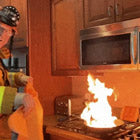 Fire
Fire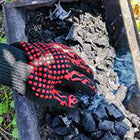 Safety
Safety Survival
Survival Protection
Protection New
New
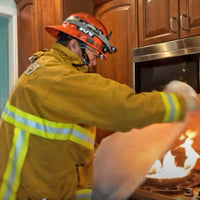 Fire
Fire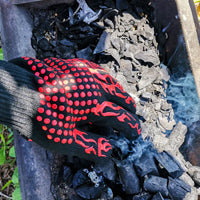 Safety
Safety Survival
Survival Protection
Protection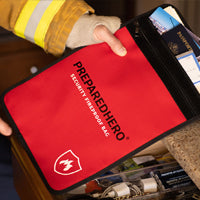 New
New
